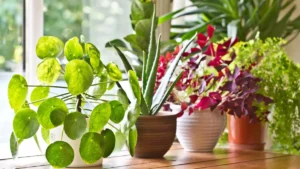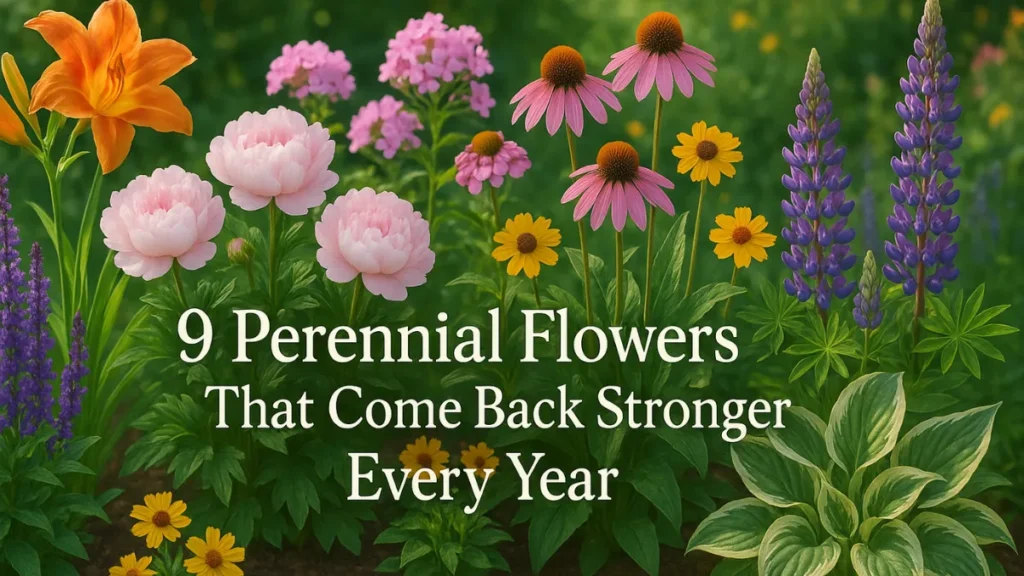Bringing nature indoors isn’t just trendy—it boosts your mood, purifies your air, and instantly elevates your decor. But while green foliage is lovely, sometimes you want a splash of color to really make your space pop. Whether it’s vibrant leaves or eye-catching blooms, these 7 colorful indoor plants will brighten up any room and are surprisingly easy to care for.
1. Anthurium (Flamingo Flower)
- Color Appeal: Glossy, heart-shaped red, pink, or white spathes (modified leaves) with a yellow spadix.
- Best Spot: Bright, indirect light (avoid harsh sun).
- Care Tip: Keep soil moist but not soggy. Mist regularly for humidity.
- Why You’ll Love It: Anthuriums bloom nearly year-round and add tropical elegance.
2. Croton (Codiaeum variegatum)
- Color Appeal: Leaves in bold patterns of red, yellow, orange, and green.
- Best Spot: Bright light to bring out the brightest colors.
- Care Tip: Keep soil consistently moist and provide high humidity.
- Why You’ll Love It: It’s like having fall foliage indoors—every day.
3. African Violet (Saintpaulia)
- Color Appeal: Delicate flowers in shades of purple, pink, blue, or white.
- Best Spot: Indirect sunlight on a windowsill.
- Care Tip: Water from the bottom to prevent leaf spotting. Keep leaves dry.
- Why You’ll Love It: Compact, charming, and blooms multiple times a year.
4. Calathea (Prayer Plant family)
- Color Appeal: Stunning leaf patterns in purples, pinks, and greens with dramatic markings.
- Best Spot: Low to medium light with high humidity.
- Care Tip: Keep soil lightly moist and avoid cold drafts.
- Why You’ll Love It: Their leaves move—folding at night and opening by day!
5. Bromeliad (Bromeliaceae family)
- Color Appeal: Central rosettes bloom in vivid red, orange, pink, or yellow.
- Best Spot: Bright, indirect light.
- Care Tip: Water in the central cup (not the soil) and empty/refresh it weekly.
- Why You’ll Love It: These tropical stunners look like living flowers for months.
6. Coleus (Plectranthus scutellarioides)
- Color Appeal: Boldly patterned leaves in reds, purples, greens, and yellows.
- Best Spot: Bright light (indoor or outdoor container).
- Care Tip: Pinch tips to encourage bushier growth. Water when topsoil is dry.
- Why You’ll Love It: A foliage plant with the flair of a flower.
7. Orchid (Phalaenopsis/Moth Orchid)
- Color Appeal: Elegant blooms in white, pink, purple, yellow, and even striped varieties.
- Best Spot: Bright, indirect light and a bit of humidity.
- Care Tip: Water weekly and avoid wetting the crown. Use orchid bark, not soil.
- Why You’ll Love It: Long-lasting blooms and minimal maintenance.
Final Thoughts
With these 7 vibrant indoor plants, you don’t need to sacrifice style for simplicity. Whether you prefer flowering varieties like orchids and violets or colorful foliage like crotons and calatheas, there’s a plant that can bring beauty and personality to your home.



